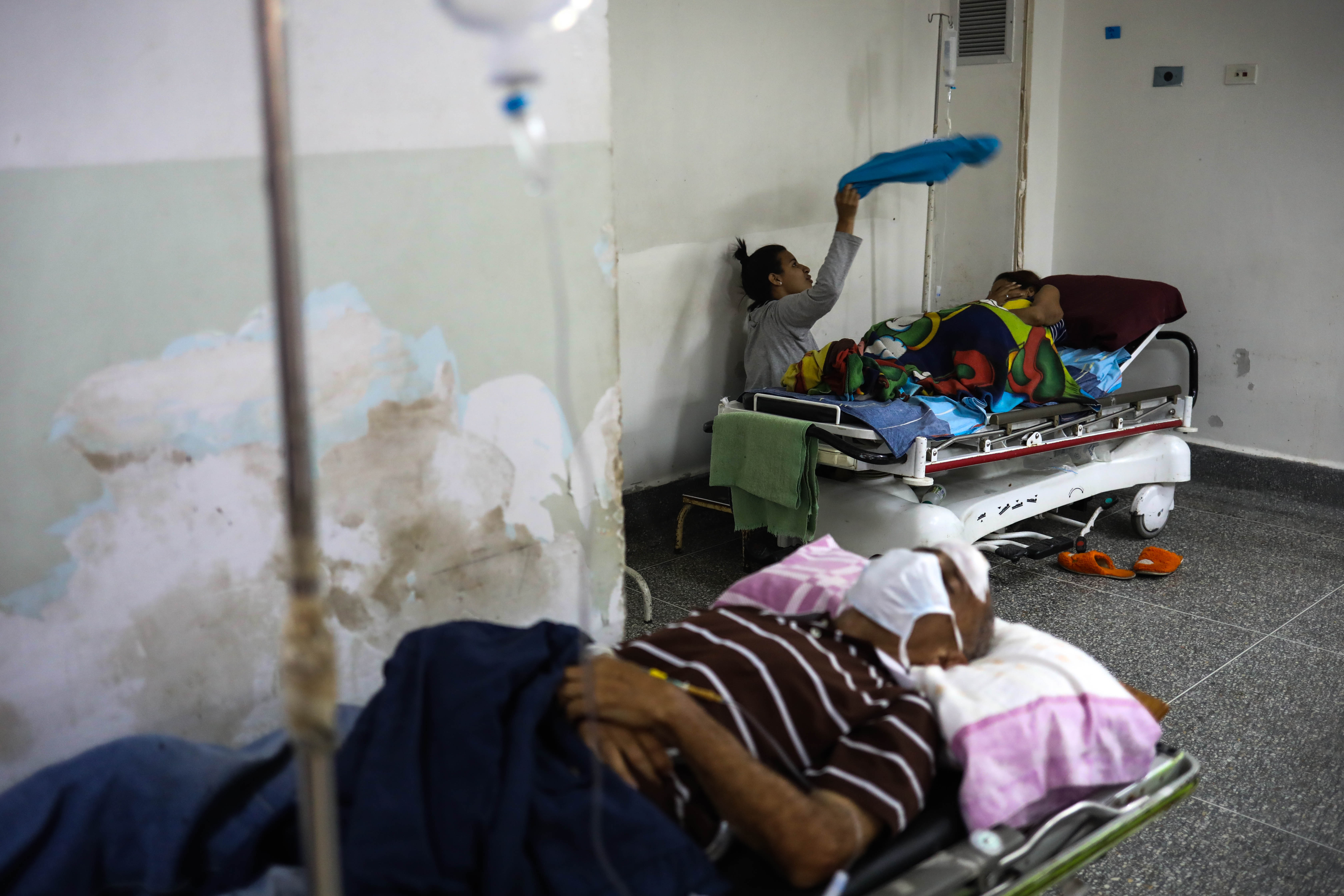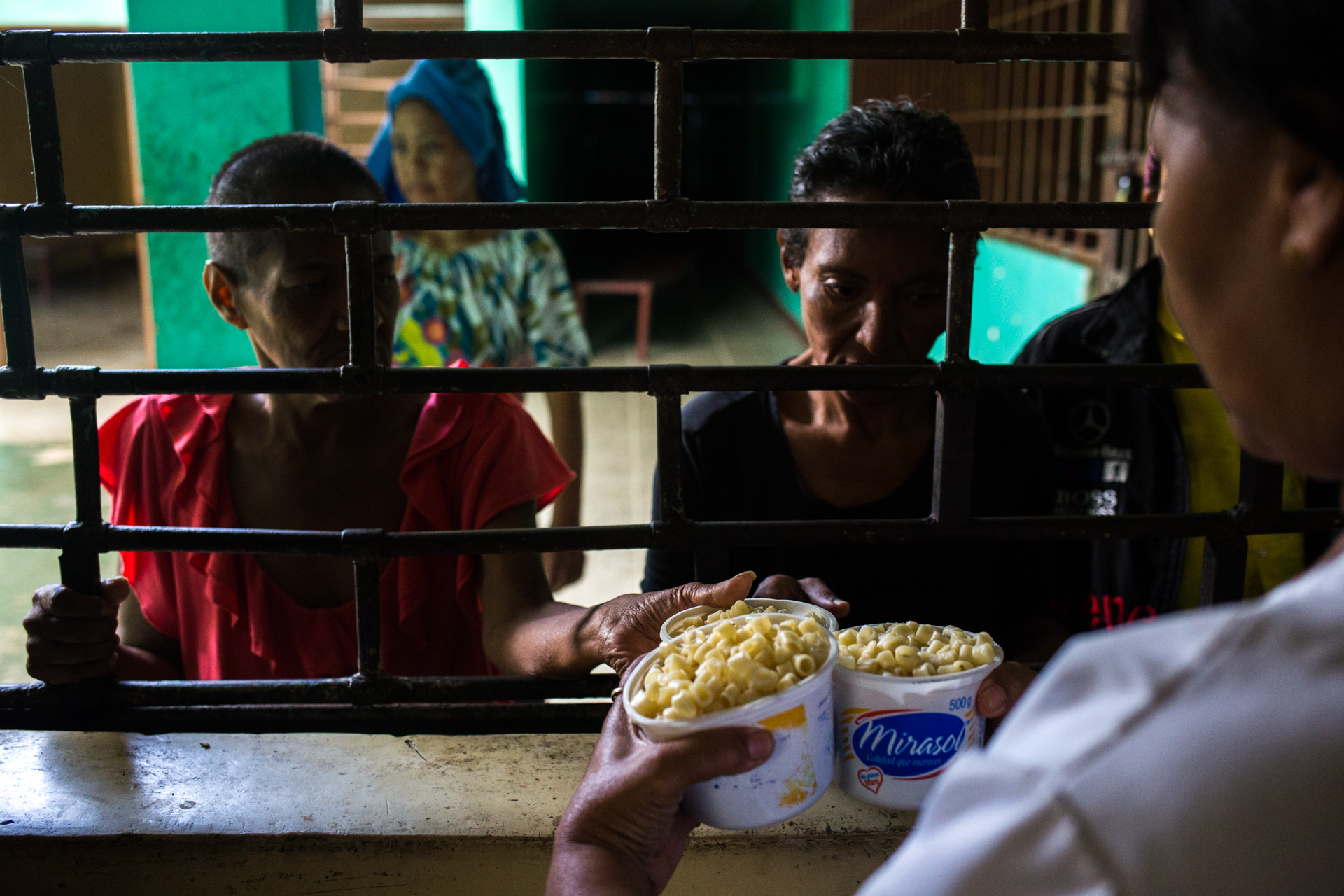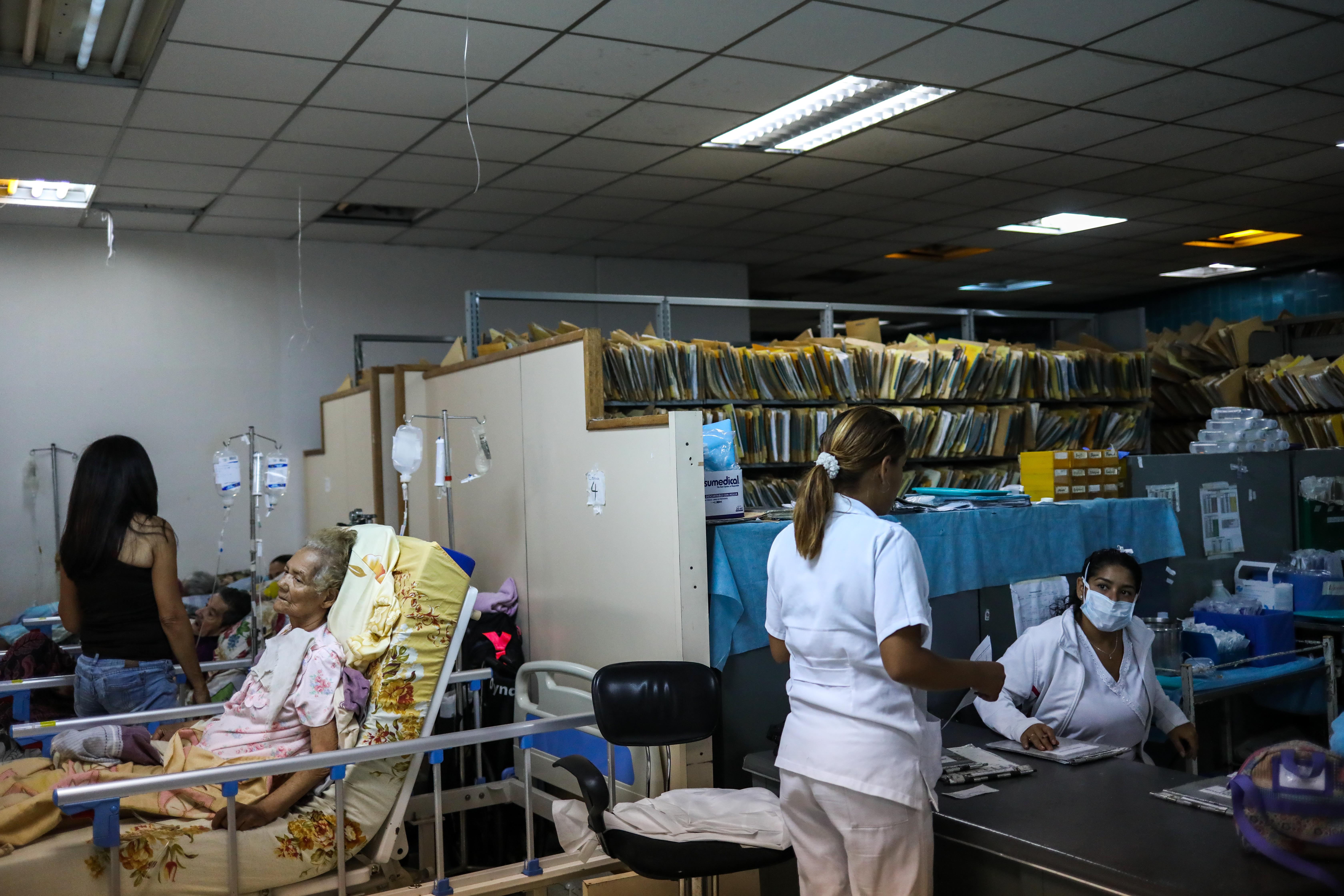Death Before Humanitarian Aid
Only six hospitals, out of 277 that the Health Ministry and the Venezuelan Social Services Institutes manage, have received the aid from the Red Cross so far.


Photos: Cristian Hernández
A Spanish version of this piece was originally published in Cinco8.
Last April 15th, the International Red Cross announced that a humanitarian aid shipment was entering Venezuela. Since then, has there been an improvement in public healthcare?
Not for Luis Bolívar and his colon injury, no. In the hospital where he’s being treated, they gave him an exploratory exam, but first he had to bring his own scrubs, surgical caps, anesthesia, toiletries, disinfectant and liquid soap. Other image exams, like the CT, couldn’t be done in this type IV hospital, because the equipment doesn’t work and there’s no fluid to produce contrast in the image.
In a private clinic, both exams cost 12 million bolivars ($670), money that he’d only have by saving his pension (40 thousand bolivars or $2.2) for 25 years.

Left: Lidice Psychiatric Hospital. Right: Magallanes de Catia Hospital. Photos: Cristian Hernández.
Right now, not only in Caracas, but in all of Venezuela, there’s a major risk of dying in one of the hospitals managed by Nicolás Maduro’s regime, precisely because of their precariousness. The National Hospital Survey 2019 revealed that, between November 2018 and February 2019, 1,557 patients died in public hospitals for lack of medical supplies.
There’s no sign of the humanitarian aid getting into hospitals. Only six, out of 277 hospitals on the Public Hospital Network (managed by the Health Ministry and the IVSS, the Venezuelan Social Services Institute) have received supplies, emergency generators and medicine like antibiotics and anti-inflammatory drugs, delivered as part of the International Federation of Red Cross (IFRC) shipment.
In Hands of the Red Cross
Like Luis Bolívar, many Venezuelans are at risk of losing the opportunity for a transplant, or dying from malnutrition or chronic diseases. These Venezuelans, in permanent uncertainty, haven’t stopped their pleas for help.
After the blackout in March, which caused the death of 22 nephrology patients, according to the Venezuelan Nephrology Society, IFRC president Francesco Rocca came into the country and said that “it’s unacceptable that children die for lack of energy.” Mario Villarroel, president of the Venezuelan Red Cross, later said that the aid was distributed to 38 healthcare centers in 16 states but, of those centers, eight are in the hands of the Red Cross, six are public hospitals, two depend on foundations and 22 are Red Cross outpatient clinics that, by the way, don’t provide free healthcare to the community.

Caracas University Hospital. 2018. Photo: Cristian Hernández.
Almost everything that the International Red Cross sent to the country in May has stayed in its own clinics. Very little has made it to public institutions: Pérez de León II in Caracas’ Sucre municipality, Guatire-Guarenas General Hospital, Pariata’s and Catia’s Peripheric Hospitals, Maracay’s Central Hospital, a dialysis unit in Zulia and a foundation helping children with cancer in Zulia, too.
Health Is Also Infrastructure
In the case of Catia’s Peripheric Hospital, a doctor who asked to remain anonymous said that they haven’t received large donations and patients still buy everything from their painkillers to supplies like gauze.
This center has seen little of the humanitarian aid, despite that, according to Villarroel, we’ve received 100 tonnes of it, including sanitary kits, antibiotics, anti-inflammatory drugs, medical supplies, emergency generators, gallons of water, iodine pills and 4,000 mosquito nets to prevent malaria. These supplies are only distributed in communities where the Red Cross has a presence and health events that aren’t massive.

Lídice Psychiatric Hospital, 2019. Photo: Cristian Hernández.
On the first shipment, 14 emergency power plants were delivered with all of their mechanical components and three IEHK kits, that are standard across the world and used for any kind of surgical procedure. They don’t require permits or complex import processes because they’re for emergencies. One full kit was delivered to the Red Cross Carlos J. Bello Hospital; the rest went to four public health centers (Pérez de León II, Pariata’s, Catia’s and Guatire-Guarenas’ General Hospital.)
To this day, the aid hasn’t arrived at the Vargas Hospital or the José Ignacio Baldó Hospital Complex, known as El Algodonal, nor to the Caracas University Hospital, the José Gregorio Hernández Hospital in Los Magallanes de Catia (all of them type IV hospitals,) or the Lídice Psychiatric.
In fact, in the latter, a patient died in June. His foot had been consumed by an infection and it was full of worms, but he didn’t get antibiotics and his wound wasn’t cleaned because there was no gauze available.
One of the doctors in the pediatric wing of Los Magallanes said that no aid from the Red Cross ever got there. They did get some supplies with the logo of the WHO and PAHO convention, some very specific antibiotics for maternal and child care and inhalers, but nothing in large quantities.

JM de los Rios Children’s Hospital. 2017. Photo: Cristian Hernández.
When Francesco Rocca was in Venezuela, by the way, he spoke about evaluating the healthcare infrastructure itself. Well, the José Gregorio Hernández Hospital has been in eternal remodeling and what’s been rebuilt isn’t working, with lighting failures and severe leaks. Two foundations working with the J. M. de Los Ríos Children’s Hospital received donations, but this pediatric hospital has no reagents in its lab and, up until recently, only one ventilation system working.
So far, only three planes have arrived, one in April and two in June. Red Cross centers have been the priority, while in public hospitals, according to the National Hospital Survey, 97% of CT scanners, 94 % of the X-Ray machines and 86% of the sonogram machines don’t work. There’s an 84% shortage of catheters and probes, and 79% in shortage of medical and surgical supplies. Almost all of the public system can’t perform routine exams because there’s a 90% reagent shortage.
The Red Cross’ goal is to raise 50 million francs (the currency it uses). That’s 52 million dollars. Will most of that go to public hospitals, where most Venezuelan patients are? The Red Cross could care for 650 thousand patients in 12 months; NGOs fighting for our healthcare say that over 7 million people need the aid.

Magallanes de Catia Hospital, 2018. Photo: Cristian Hernández.
Caracas Chronicles is 100% reader-supported.
We’ve been able to hang on for 22 years in one of the craziest media landscapes in the world. We’ve seen different media outlets in Venezuela (and abroad) closing shop, something we’re looking to avoid at all costs. Your collaboration goes a long way in helping us weather the storm.
Donate




